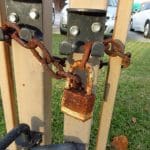Effective Place Management
Effective Place Management is the evaluation of how effective the protected area, or area in question, is being managed.
In other words, is the property in question being properly managed to the extent that the defined assets are properly protected and are the predetermined goals and objectives related to security and risk being realized, and if so are they effective?
Often times the reason a facility attracts crime is because of poor management of that property or area.
Example:
Case Study:
- Southern California City Early 1980’s
- High Crime Rate
- Miles of Beachfront & Pier That Were Unsafe (Hot Spots)
- Half of the Downtown Blocks Were Vacant Land
- Police Were Operating Re-actively vs. Proactively
- Known Criminal Activity (Drugs, Gangs, Robbery, Sex Crimes, Alcohol…)
- City Was Trying to Find Investors
Management Change of Philosophy
- Crime Prevention & Mitigation Strategies Developed & Implemented
- Crime Displacement
Effective Place Management Challenges
- Unable to understand that some facilities may have a disproportionate number of crimes compared to similar ones.
- What makes those other sites less of a crime magnet or a risky facility?
- Management of high crime facilities may not know what to do to mitigate their criminal activity.
- Onsite management may not be communicating the true scope of the problem or potential mitigation requirements to the property owners/investors.
- They often have no security department or responsible charge
- Untrained or under-trained security/management
- Budget Constraints
Ineffective place management can also be the result of other factors:
- Poorly planned facility
- Ineffective or poorly executed management strategies
- Lack of risk identification and research for a known location and/or industry
Identify the Problem
- Effective Place Management is not just a big city issue.
- Often based on crime statistics (not 100% reliable).
- Similar businesses may not have the same issues.
- 80/20 Rule:
- Convenience Stores – 20% them account for 80% of crimes.
- 20% of the people account for 80% of arrests/crimes in some cities.
- Seattle Study – 14 year study that showed where 5% of the city blocks in a defined area accounted for 50% of all crimes.
- One of the main issues is that reliable crime information resources needed to identify crime clusters, hot spots, and risky facilities is not always 100% reliable.
Effective Place Management Research Limitations
Three Sources:
- Police Stats
- Crime Mapping Services
- Internal Statistics (e.g. security)
However the internal statistics do not always match law enforcement or crime mapping services statistics
Challenges:
- Internal numbers are often higher for actual events
- Police numbers can be inaccurate
- For example, when police reports are generated at a hospital, they will often identify the hospital address as being the location of the crime, even though the crime took place somewhere else.
- Victims will not always make police reports, but may report to security
- Many crimes go unreported due to lack of trust with the police, small losses, no insurance, and fear of retaliation….
Crime Hot Spots
Hot Spots are those known locations where an usually high number of crimes, or criminal activity incidents are occurring.
- A property may be known by security, management, and quite possibly even the beat cops that work the area, yet not reflect the same information on Crime Mapping software programs, resources such as crime risk forecasting data reports and maps.
- A victim has to report a crime to police and have it documented or it will not show on crime mapping resources.
- Crime Mapping services, or even law enforcement records may not be accurate.
Hot Products
Hot Products are products that are historically related to increased crime:
- Alcohol, Pharmaceutical products (legal or otherwise), Cash Services, Electronics (cell phones), Cigarettes ………
- In some locations this could also include vehicle thefts and numerous other types of items. (e.g. parking facilities)
Identify Crime Clusters
- Look at high crime areas and within those areas there may be clusters.
- Some areas within a cluster may also be free of major crimes.
- Look for signs of criminal activity and also look for physical disorder on or near your property.
- Such things as abandoned cars, excessive trash, graffiti (what does it say), vacant lots and buildings.
What if this was on or near your property or a property your organization was planning to purchase?

Crime Displacement
- Has your property had an increase in criminal activity or security risks?
- Is it due to businesses in the area (new) (e.g. drugs, alcohol)?
- Is there high or new police enforcement in the area (Hot Spots)?
- Will increased security/police presence displace activity and affect neighboring properties
Remember Newton’s Law:
- For every action there is an equal and opposite reaction
Risky Facilities
- In any large city just a handful of bars give police far more trouble than all of the rest put together. The same holds true of many other types of establishments, such as schools, convenience stores, and parking lots. In each case, just a few produce far more crime, disorder and calls for police assistance than the rest of the group combined. This phenomenon is called:
Risky Facilities
Source: Understanding Risky Facilities, published by Community Oriented Policing Services and Department of Justice- Ronald V. Clarke and John E. Eck 2007 [1]
- Within facilities of the same type (e.g. c-stores, bars, schools…) only small number of the locations often account for a disproportionately large number of crimes.
- The risky facilities concept places a great deal of emphasis on the role of site managers and how their practices influence the differences observed between facilities.
- Identifying locations that account for the most/least crimes (80/20), you can identify key factors influencing the differences and what management practices are most effective.
- In the end, information obtained can be utilized to implement crime prevention strategies at all locations, and develop long-term best practices that can also be used across different industries.
So the question is, why do facilities of the same type vary in risk, and how can those risks be reduced?
Source: Trends & Issues in Crime and Criminal Justice – June 2014
Security Mitigation Strategies
- Increased security presence, even if it is short-term.
- Give them the information and recommendations to remedy the differences which may lead to crime prevention or reduction.
- Identify risk mitigation recommendations.
- Establish goals that can be measured.
- Crime Prevention Through Environmental Design (CPTED).
- Landscaping
- Graffiti Abatement
- Lighting
- Open dialogue with neighboring property owners.
- Ongoing dialogue with law enforcement officers that work the area, not just crime prevention bureau.
- Identify resources:
- City/County Officials (Zoning, Police)
- Neighborhood or Business Groups
- Temporary increase in security measures to counter existing security risks or crime displacement issues
- Research and understand environmental criminology theories to answer the question why does crime happen where it does (e.g. Criminal activity based on geography, environment, and urban sociology).
Note:
- Performance Bonds have been required by some government agencies in lieu of legal actions. This is seen as taking the financial burden off of the government for risky facilities or hot spots and placing that responsibility back on the property management/owners.
Conclusions
- The often stated reason for ineffective place management is management. All of the best practices in the world will not make a difference if the site management is not competent.
- Increased security for Hot Spots or Hot Products will often result in crime displacement, and we need to understand how this affects our facilities, even if it occurs at another location.
- A Security Expert’s normal practice is to provide our clients with proven security strategies, recommendations, and best practices, but in the end it comes down to the fact that the client may not be willing to accept responsibility for crimes committed on their property.
- Often times property owners will defer mitigation to law enforcement, and yet we know that that is not always effective.
Research Resources
- Understanding Risky Facilities, published by Community Oriented Policing Services and Department of Justice- Ronald V. Clarke and John E. Eck 2007
- Academy of Criminal Justice Sciences: acjs Today – Volume XXIX • Issue 1 • January 2014
- Center for Problem Oriented Policing-Tool Guides-Understanding Risky Facilities: Tool Guide 6 (2007) Ronald V. Clarke and John E. Eck
- Risky Facilities: A New Crime Concentration Concept: Ronald V. Clarke – Rutgers University – International CPTED Conference September 2004
- Justice Center – Council of State Governments: Social Impact Bonds Gain Momentum in the Criminal Justice Field February 2014
- Community Oriented Policing Services U.S. Department of Justice: Understanding Risky Facilities; Ronald V. Clarke & John E. Eck. March 2007
[1] Understanding Risky Facilities, published by Community Oriented Policing Services and Department of Justice- Ronald V. Clarke and John E. Eck 2007






